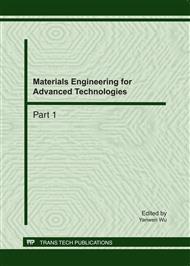p.278
p.283
p.288
p.294
p.300
p.306
p.311
p.317
p.323
A Study of the Mechanism of Electrical Discharge Machining of Particle Reinforced Metal Matrix Composites with Concavo-Convex Electrode
Abstract:
A new concavo-convex electrode has been designed and employed. And an analysis of the electrical discharge machining (EDM) mechanism of a particulate reinforced metal matrix composite with this new electrode was conducted in this study. It was found that EDM with this new electrode can accelerate the debris discharge during machining so that it has a higher MRR compared to the case where a normal electrode was employed. Moreover, by studying the surface craters, it could confirm that discharge craters tend to connect together for the normal electrode. This indicates an abnormal arcing condition. Thus, the wire electrode was easy to be broken. While for the new electrode, separated craters were observed on the machined surface. This means a stable processing condition. The experiment results reveal the processing mechanism of EDM electrical discharge machining of MMCs by employing this new electrode.
Info:
Periodical:
Pages:
300-305
Citation:
Online since:
June 2011
Authors:
Price:
Сopyright:
© 2011 Trans Tech Publications Ltd. All Rights Reserved
Share:
Citation:


